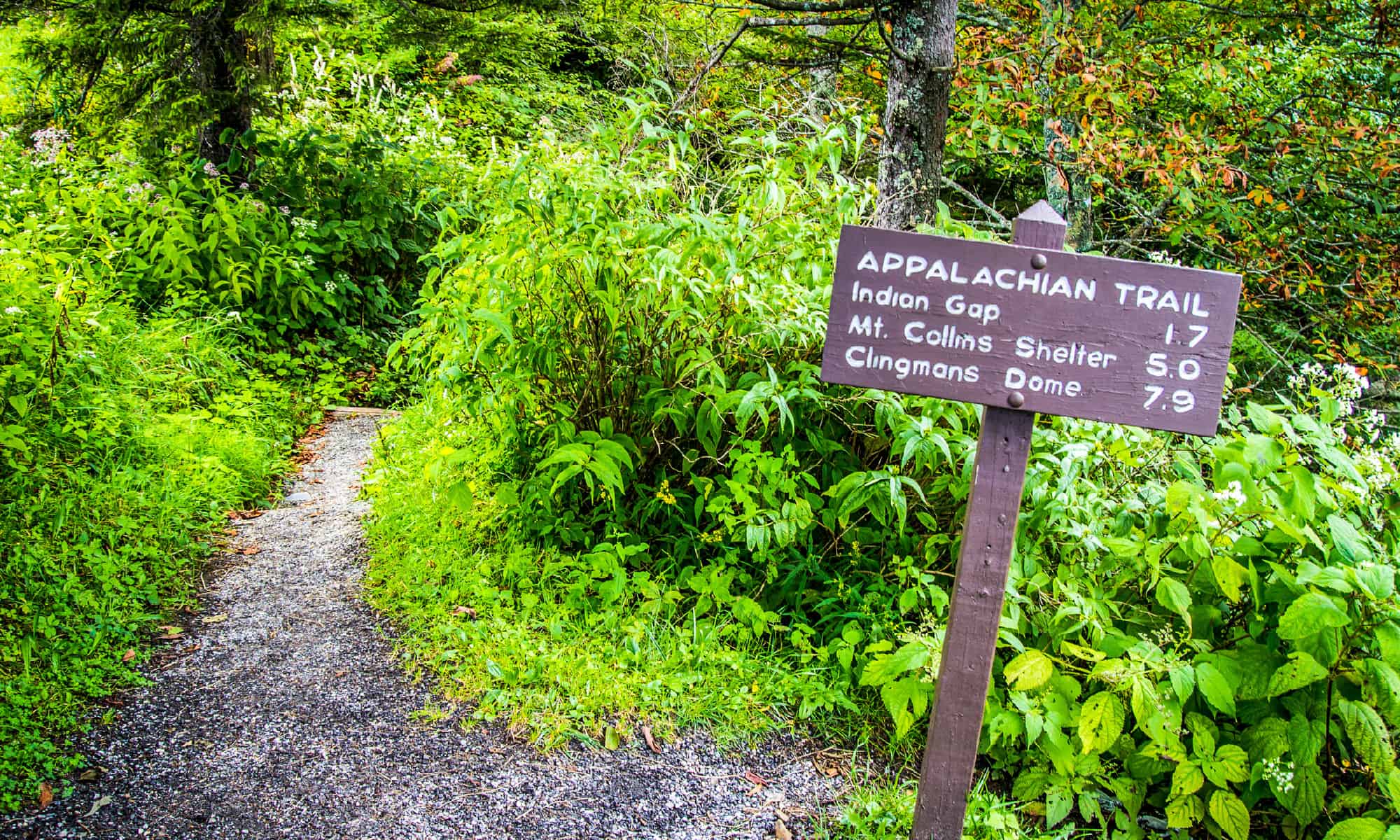The Appalachian Trail is a one-of-a-kind hiking experience that countless books have been written about. The trail has plenty of challenges from dangerous animals to even more dangerous hiking conditions. Many people have set off on the trail expecting to walk the entire 2,190+ miles from Maine to Georgia but few have actually hiked the entire trail. It isn’t for beginners or those with health challenges. Some of the most dangerous animals on the Appalachian Trail are smaller than a marble.
Every year, over three million people set off on the trail with an end point in mind. Of those people approximately 3,000 set off to hike the trail to completion. About 20% of those people finish the trail. Some leave because of unsavory weather conditions, others because of bug bites or fear of animal encounters and some others only choose to do day or partial trail hikes. It’s not any easy walk in the woods and some parts of the trail are especially treacherous to do on foot.
Almost yearly, parts of the Appalachian Trail are shut down not allowing hikers to use campsites and shelters due to aggressive black bear activities. It’s very rare that you will even see a bear on the trail because they are very timid by nature. Once a bear has become used to people and especially used to people equaling food, they can become dangerous. Never feed a bear because it is a death sentance for them.
1. Copperhead (Agkistrodon contortrix)
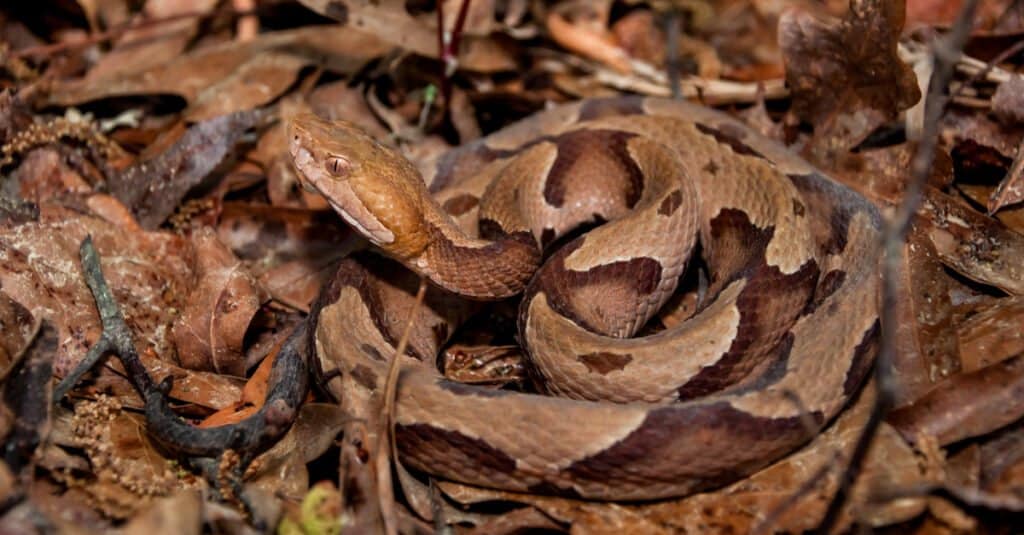
©Jay Ondreicka/Shutterstock.com
Why They’re Dangerous: Copperhead venom is some of the worst out there, and they aren’t found of being threatened or stepped on. A copperhead’s venom will cause immediate severe swelling and pain followed by a minty or metallic taste in your mouth, changing heartrate, trouble breathing, numbness around the wound and scalp, hands, feet or mouth, and swelling of the lymphnodes. It is very rare that a copperhead bite results in death, though the side effects can be much worse if the bite happens to a child, elderly or immunocompromised person.
What to Do if You See One: Get away from it but remain calm. Keep your eye on the area that it is and find another way around. Keep your cell phone’s location turned on in case paramedics need to find you. Stay on the trail and keep your eyes where you are stepping. Snakes can blend in with their surroundings very well.
2. Black Bears (Ursus americanus)
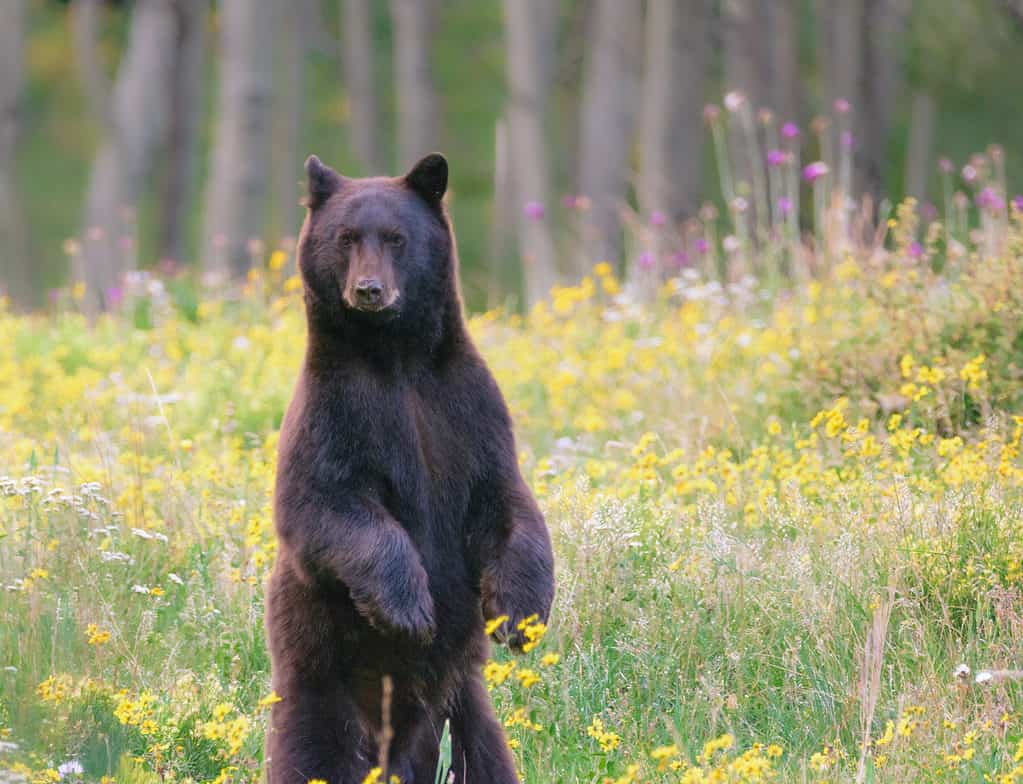
Black bears are very timid and will flee almost every time they see a human.
©Constance Mahoney/Shutterstock.com
Why They’re Dangerous: Humans sometimes feed bears on the Appalachian Trail which makes them less fearful of humans and much more dangerous. They could also smell food from your cooking or campsite and try to steal it. If you happen upon a female with cups, she will try to flee but if she feels threatened enough, she may attack. Black bears are generally timid and chances of you seeing one are slim.
What to Do if You See One: Walk away from it while making sure to keep your eye on it. Never run from a bear. If the bear approaches you, make yourself look as big as possible, clap your hands and yell at it loudly all while continuing to back away. Do not make direct eye contact because that can seem like a threat to the bear.
3. Eastern Diamondback Rattlesnake (Crotalus adamanteus)

Eastern diamondback
rattlesnakes
are the largest rattlesnake in the world.
©Chase D’animulls/Shutterstock.com
Why They’re Dangerous: If a diamondback rattlesnake bites you, you need to immediately call for help. Be sure to have your cell location turned on so paramedics can find you quickly. A bite from one will be painful and cause internal bleeding, severe swelling, and muscle damage, necrosis, and death. Systemic reactions are not limited to headache, nausea, vomiting, abdominal pain, diarrhea, dizziness, and convulsions. You can easily step on or near a rattlesnake which will leave it feeling threatened and it could strike in defense. Always watch where your feet are going and do not be distracted by conversation. Another important tip is to always stay on the Appalachian Trail. If you must go off the trail take a long stick with you to brush the ground in front of where you are walking, and be sure to walk carefully. Plenty of snakes are around the Appalachian Trail.
What to Do if You See One: Back away and stay out of striking distance. If the snake is not moving off the trail, find another way to go around. Do not try to step over it or anywhere near it. They can move fast.
4. Eastern Cougar (Felis concolor)
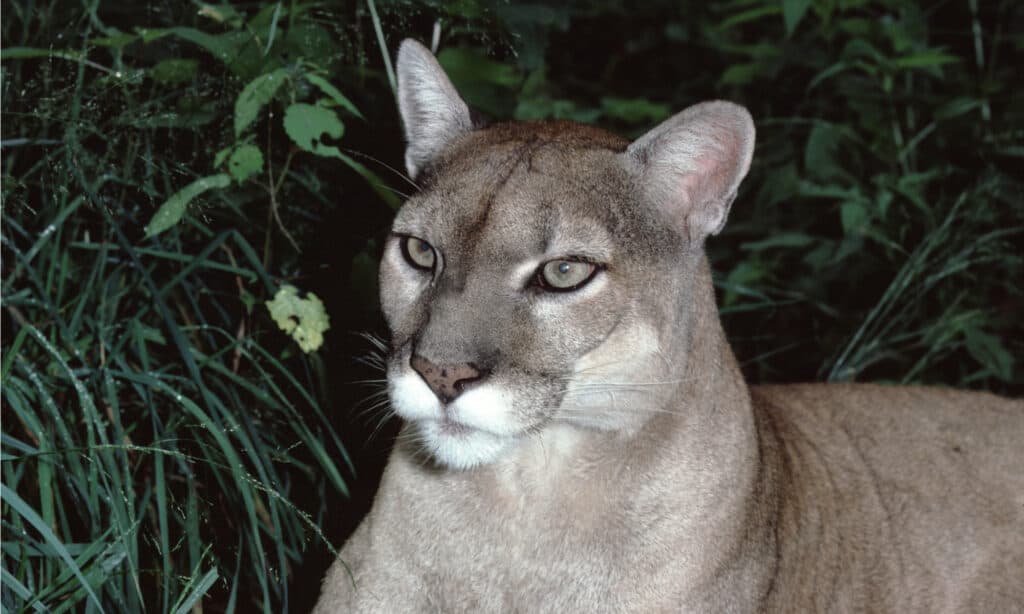
Eastern Cougar (Puma Concolor Couguar). This photograph was taken in 1986, prior to when they were officially declared extinct in 2011.
©Liz Weber/Shutterstock.com
Why They’re Dangerous: They are aggressive if you are too close to their young or den. It is severely unlikely that you will see one while hiking the Appalachian Trail since they were deemed extinct long ago. Occasionally, people say they’ve seen one but there is a lot of speculation regarding if it was anything at all.
What to Do if You See One: Act calmly, and walk backwards while keeping eye contact. If one charges you, keep backing up but make yourself look as big as possible and yell at them loudly. Do not turn your back on a cougar, and definitely do not run.
5. Wild Boar (Sus scrofa)
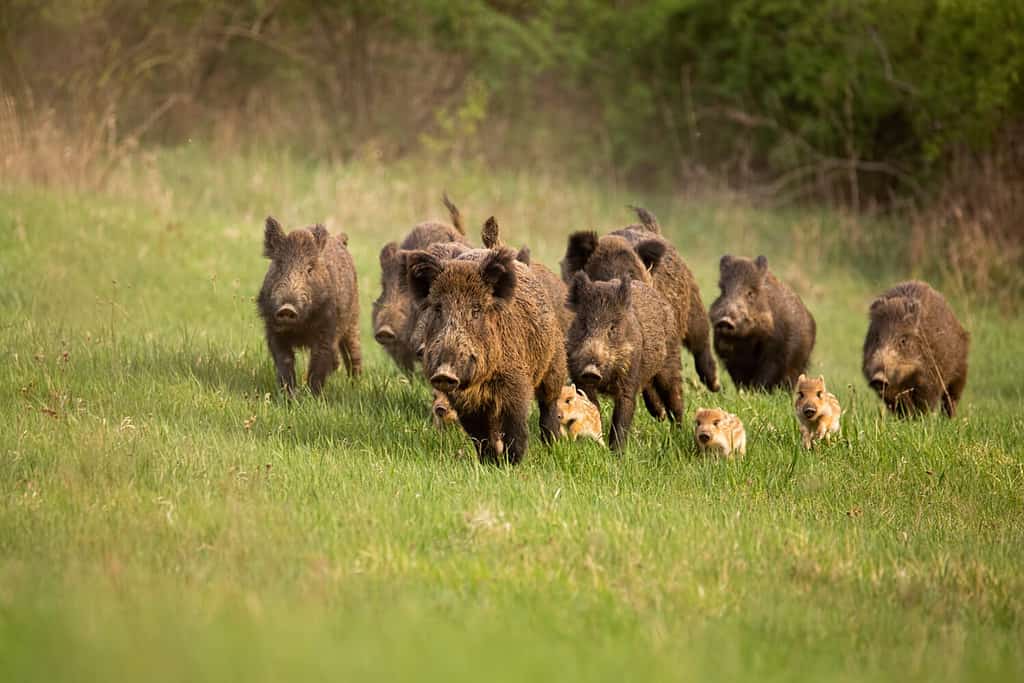
The nocturnal wild boar is rarely seen but evidence can be found in the form of rutted up ground. They do this to find roots, which they eat.
©WildMedia/Shutterstock.com
Why They’re Dangerous: If you are charged by a male with large tusks, they can injure you or break bones. If you have a dog with you, they may feel threatened by it and try to attack. Keep your dog leashed at all times.
What to Do if You See One: Give them plenty of space and back away slowly. If it doesn’t move off the path, find another way around. Do not run because it can cause a chase response in an animal that wasn’t going to chase you. If the boar decides to charge, then can run 25 mph, and you won’t be able to outrun them. Get up a tree or up on anything high because they cannot climb.
6. Coyotes (Canis latrans)
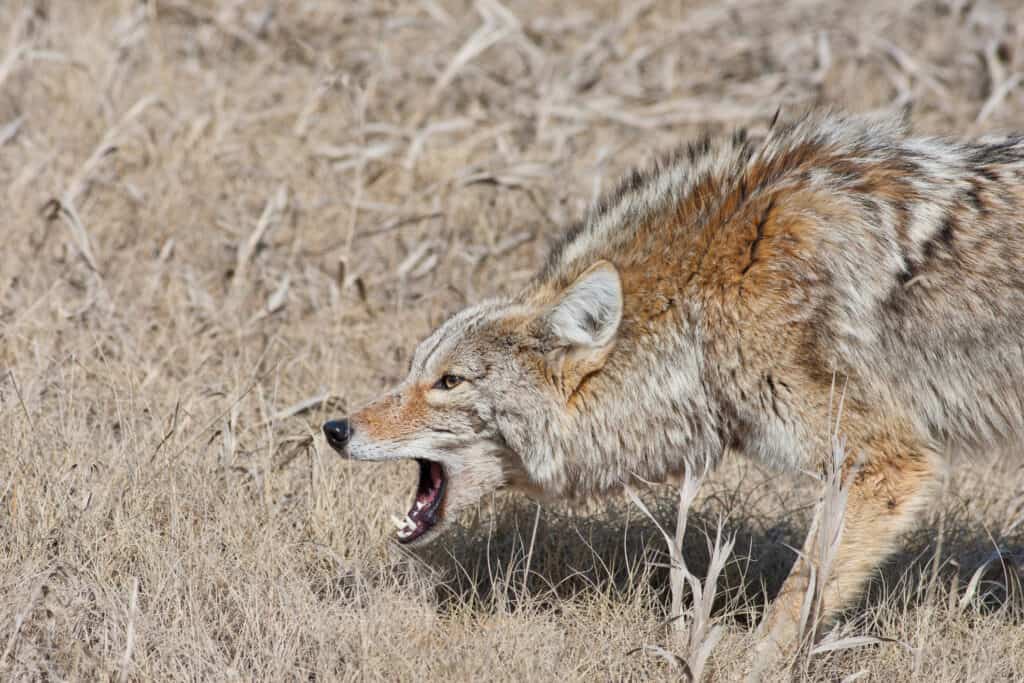
Coyotes are timid animals by nature but they are protective of their young.
©iStock.com/Songbird839
Why They’re Dangerous: They can have rabies. Other reasons can be that they are too comfortable around humans because humans have been feeding them. In that case, they may simply be curious if you will also feed them. Being attacked by a coyote is extremely rare because they are generally timid animals. They can become vocal, barking and yelping if you are too close to their den and babies while hiking the Appalachian Trail. The males sometimes come a bit too close for comfort, especially with other dogs. This occurs during mating season.
What to Do if You See One: Just keep walking but continue to hold eye contact, and they will go away once you are far enough away from the den. If it does continue to follow you, yelling and making yourself look big should scare them off. If you suspect a coyote is rabid, do not run from it
7. Brown Recluse Spider (Loxosceles reclusa)
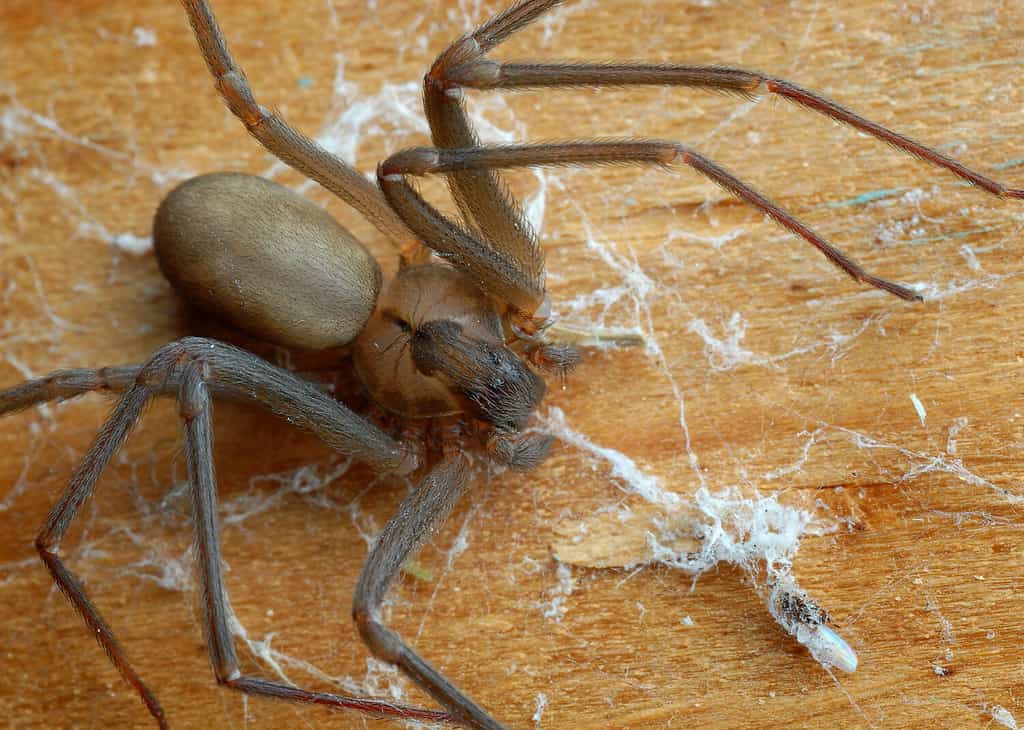
Brown recluse spiders have a clean violin shape on the front part of their body. Many types of spiders look similar but only the brown recluse has the fiddle or violin shape near its head.
©Miles Boyer/Shutterstock.com
Why They’re Dangerous: The bite from a brown recluse spider can cause pain, itching and swelling within 3 – 8 hours of being bitten. Most people don’t know they were bitten until they see the bite later. Generally, the bite does not cause any serious symptoms and will heal and go away within three weeks. Other times, the bite causes systemic reactions such as dizziness, nausea, muscle cramping, headache, fever, and chills. These reactions mostly affect those who are children or elderly. As the wound progresses, some people develop a blister at the site that is a bluish-pale color with irregular edges. The necrotizing skin can expand and can take three months to heal. In all cases, it is recommended to see a doctor as soon as possible. Always shake out your clothing, sleeping materials and inspect your tent before it becomes dark. These spiders only bite as their last resort, and almost all bites are from the spider being trapped against the skin and unable to escape.
What to Do if You See One: Don’t freak out, and do not kill it if at all possible. They are timid spiders that stay hidden and will want to get away from you. If you find the spider that bit you, put it in a container to show the doctor.
8. Yellow Jackets (Vespula maculifrons)
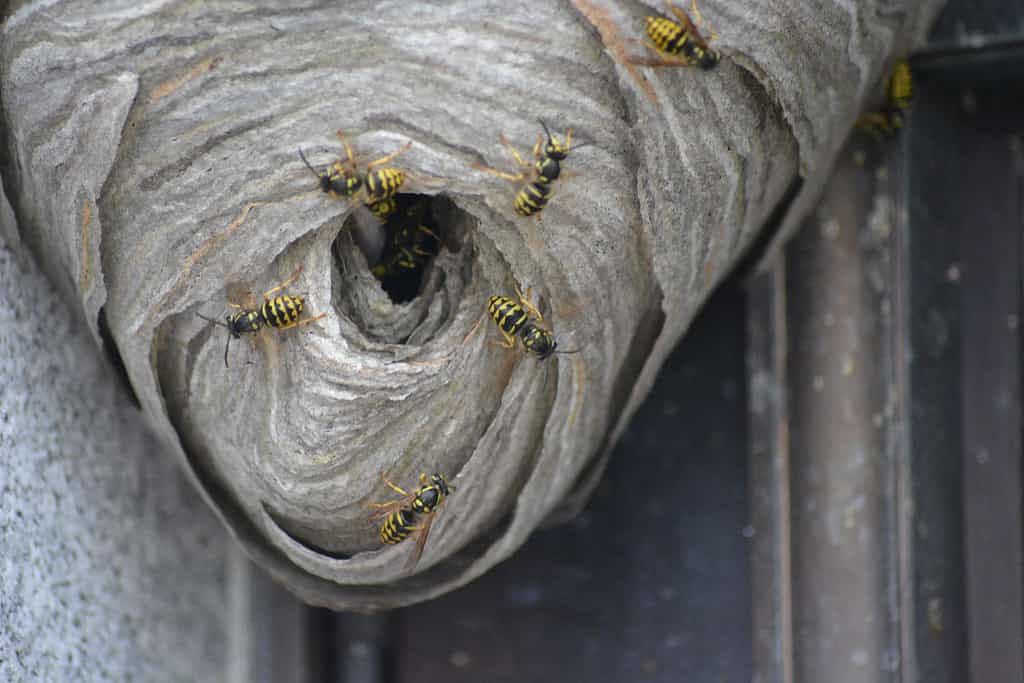
Yellowjackets will aggressively defend their nest.
©Daniel Loya/Shutterstock.com
Why They’re Dangerous: If you make one angry, it’s likely to bring all of its closest friends to help get back at you. They are able to sting repeatedly, which could be a death sentence if you are allergic. Even if you aren’t allergic, being stung many times can have negative consequences. Taking an Epi pen with you while hiking is a good idea.
What to Do if You See One: Stay calm and walk away. Do not swat them, or you stand a good chance of being stung.
9. Mosquitos (Anopheles freeborni and quadrimaculatus)
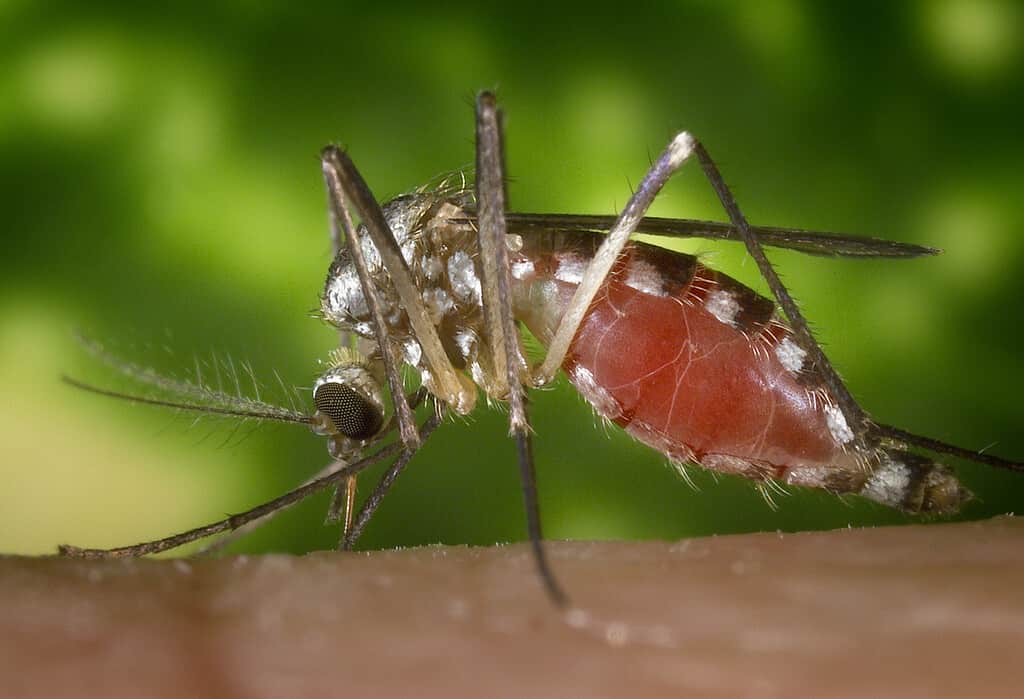
Mosquitos are responsible for spreading more illnesses than everything except humans.
Why They’re Dangerous: Mosquitos carry a vast amount of viruses, and you do not want to catch any of them. West Nile virus is the most common illness caught by a mosquito bite in the United States. Not everyone becomes sick from it, but some do, and it can be serious. Most other mosquito-borne illnesses are almost nonexistent in the United States, but near Florida, there have been several reports of people coming down with malaria. Long sleeves, pants, permethrin-treated clothing, and Deet bug spray are all important when staying safe from mosquitos.
What to Do if You See One: If you are hiking during spring – fall, you will see mosquitos. There’s just no way around it. Do not make camp near stagnant standing water since that’s where mosquito larva emerges. Always wear bug spray, even if your clothes are treated. There’s little worse hiking than when you’re hot, sweaty, and covered in itchy bites.
10. Rabid Raccoons, Bats or Skunks
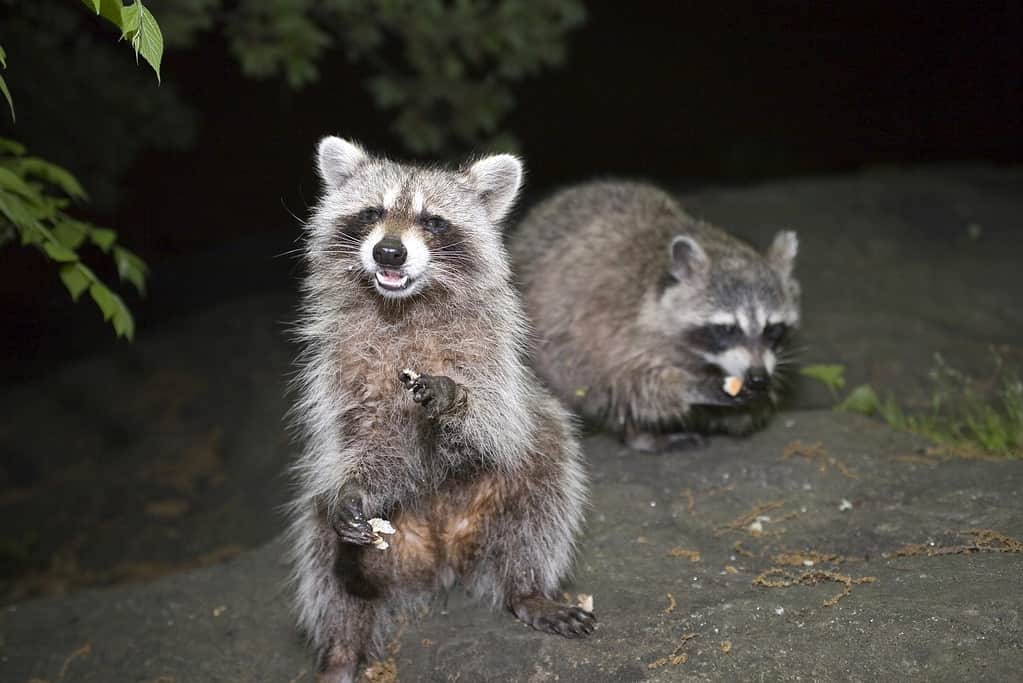
Sadly, raccoons are one of the main carriers of rabies.
©iStock.com/eddtoro
Why They’re Dangerous: It isn’t that raccoons are dangerous, but rabies is, and you do not want to get the sets of shots in your stomach so you don’t catch it. Bats, skunks, and a myriad of other animals can also contract rabies. If you see any creature acting strangely, use caution and get away from it. Rabid animals walk weirdly, foam at the mouth, and cannot drink water. Without water, death is imminent for those who are sick. If you have a dog on the trail with you, make sure their rabies vaccination is up to date before hiking.
What to Do if You See One: Get away from a rabid animal but make sure to report it to animal control or the police. If you or your dog are bitten by a rabid animal, get medical help immediately.
11. Deer Ticks (Ixodes scapularis)
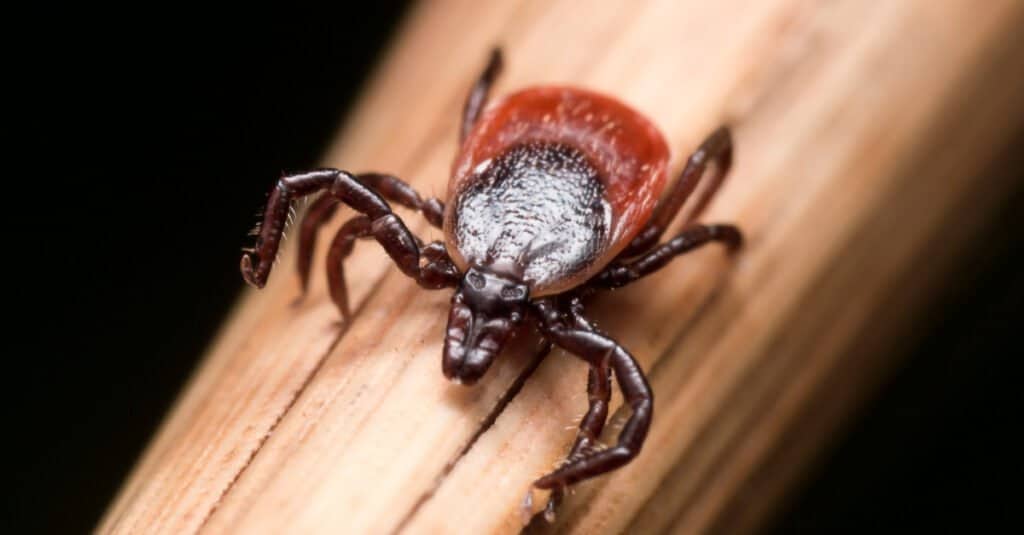
Deer ticks can be the size of a poppy seed.
©Steven Ellingson/Shutterstock.com
Why They’re Dangerous: This is the most dangerous animal you will probably ever encounter on the Appalachian Trail and quite possibly in all of North America. These deer ticks are responsible for Lyme disease. Lyme disease is a horrible, long-lasting neurological condition that can sneak up on you. Most people with Lyme disease do not know about it until they either have a positive test or the symptoms cannot be anything else. It can be debilitating and especially horrible for the young and old. There are numerous helpful articles that the Appalachian Trail Conservationists put out regarding ticks and Lyme disease. Familiarize yourself with them. One of the best ways to stay safe from ticks is by wearing appropriate clothing treated with permethrin. Many brands are doing this now. Also, bring bug spray with DEET, a cushion to blanket treated with bug spray or permethrin, and be sure to do frequent tick checks.
What to Do if You See One: If you see a tick, go away from it. They are living just like you are and have no idea they hurt us so badly. Live and let live whenever possible. If you have a tick on you, see if the head is under your skin. If it’s not, pick it off and dispose of it. Also, if the tick’s head is under your skin, break out your tweezers and pull it off, making sure to get the head. It can be tough because deer ticks can be the size of a poppy seed. The sooner you get the tick off, the better your chances are of not getting Lyme disease.
12. Humans (Homo sapiens)

Camping doesn’t have to be a big setup with fancy necessities. The best campers pack incredibly light but intelligently.
©Prapat Aowsakorn/Shutterstock.com
Why They’re Dangerous: It’s easier to discuss why we humans aren’t dangerous because there are unlimited answers to why we are dangerous. We are dangerous to ourselves by thinking we know best when we don’t. Humans are dangerous to wildlife because of the dangerous trash we leave behind that can get stuck around necks, poison the animal, or kill them. We are dangerous to the wild flora by littering, stacking rocks in creeks, picking plants, or trampling on them off the trail. Humans are dangerous to other humans by suggesting they involve themselves in their stupidity, by fighting and injuring each other, by being cruel and causing psychological harm, or by being ignorant about the trail itself.
What to Do if You See One: Probably the best thing you can do is run, but they will likely just follow you to find out why you ran away. In all seriousness, try gracefully educating incompetent hikers about the dangers of their activities. By setting a good example, you are doing the best thing you can in the situation. Humans often copy each other, much like lemmings or sheep. Always make your campsite look as if no one ever camped there when you are finished. If you are into hiking socially, always be a great example of what to do while on a trail and steer clear of groups that lazily store their food, tend to litter or are otherwise disrespectful to the environment.
Thank you for reading! Have some feedback for us? Contact the AZ Animals editorial team.

